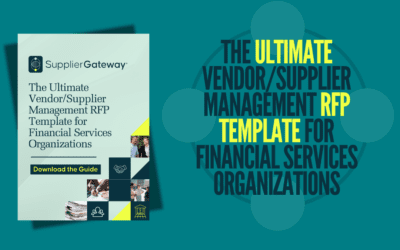Supplier Diversity is a proactive business strategy that ensures access to a diverse range of suppliers in the procurement of goods and services. To qualify as a diverse supplier, a company must be at least 51% owned and operated by an individual or group that is part of a historically underrepresented or underserved group. There are approximately 18 supplier diversity classifications in the U.S.
According to The National Minority Supplier Diversity Council (NMSDC), certified Minority Business Enterprise (MBEs) generate $400 billion in economic output that supports and creates 2.2 million jobs and $49 billion in annual revenue for local, state, and federal tax authorities.
Though these numbers are on the rise, there is still some confusion about supplier diversity in general, which has caused some organizations to hesitate about their plans to implement a program. This article will list some of the common myths that lead to misconceptions regarding supplier diversity programs.
Myth 1: Diverse Suppliers Tend To Be Not Responsive and Have A Bad Reputation.
One of the significant advantages you get when working with diverse suppliers (who are often, but not always, small) is their agility. Though a large supplier may give you a very broad range of products and services, smaller suppliers may specialize in just a few. These products or services are their “bread and butter,” motivating them to be quicker in response to customer requests.
The key takeaway here is, a diverse supplier has more incentive to focus on your goals as a buyer – their reputation depends on it – whereas a larger supplier may be more focused on its bottom line.
Myth 2: Diversity Is About Lowering Your Standards
It’s a big misconception that you have to lower your standards and expectations to work with diverse suppliers. Hackett’s 2017 Supplier Diversity Study found that nearly all diverse suppliers meet or exceed expectations, and top corporate performers in supplier diversity experience no loss in efficiency. This misconception generally has its roots in unconscious bias, old habits or just misinformation. For strategic buyers, the goal is to find the best value supplier for their requirements, no matter their demographic characteristics.
Myth 3: A supplier cannot be minority-owned, woman-owned, or diverse unless they are certified.
This is perhaps one of the most significant challenges that new programs face, trying to figure out what the standard is for who is or isn’t diverse. There’s a simple way to break this down – the characteristics of the company make them diverse – i.e., if the company is 51% owned and operated by an individual or group that is part of a historically underrepresented or underserved group. This classifies the company as diverse.
But what if you want to be sure about the 51% ownership? That’s where certification comes in. Some organizations specialize in validating the 51% ownership and control standard. To be certified as a diverse supplier, a company must go through a certification process with a regulatory agency or organization. Here are some of the most popular agencies:
- National Minority Supplier Development Council (NMSDC)
- Women Business Enterprise National Council (WBENC)
- United State Hispanic Chamber of Commerce (USHCC)
- U.S. Business Leadership Network (USBLN, for disabled-owned small businesses)
- National Gay and Lesbian Chamber of Commerce (NGLCC)
- National Association of Women Business Owners (NAWBO)
- Small Business Administration (SBA)
- Asian Pacific American Chamber of Commerce (APAAC)
- Vets First Certification Program (for veteran-owned small businesses)
P.S.: It’s not uncommon for a diverse supplier to be certified by more than one agency.
As with all grand schemes, there’s an “in-between” called self-certification. In many cases, including when working with the federal government as a small business or small disadvantaged business, woman-owned small business and other categories, it is possible to self-certify as a diverse supplier. This hasn’t always been the case – hence some of the confusion.
Suffice it to say, some organizations accept self-certification, which is an affidavit or attestation by the supplier about the 51% ownership (this option is already built into the SupplierGateway platform), while others require certification by a third party. What works best for your organization depends on how the information will be used (some use certification, self-certification and classification selectively for different reasons)
By choosing SupplierGateway Supplier Diversity Management Software solutions, you will have the tools to improve your Corporate Social Responsibility and Inclusion initiatives rapidly. With our automated and integrated Tier-1 and Tier-2 Diversity & Local Spend Reporting analytics, you can easily track the impact of spend decisions on a local, state and national scale.
We’re excited to tell you more! Contact us today.












